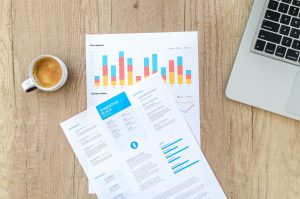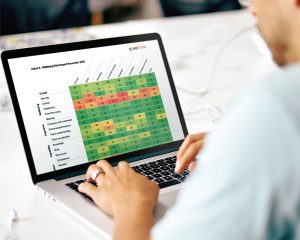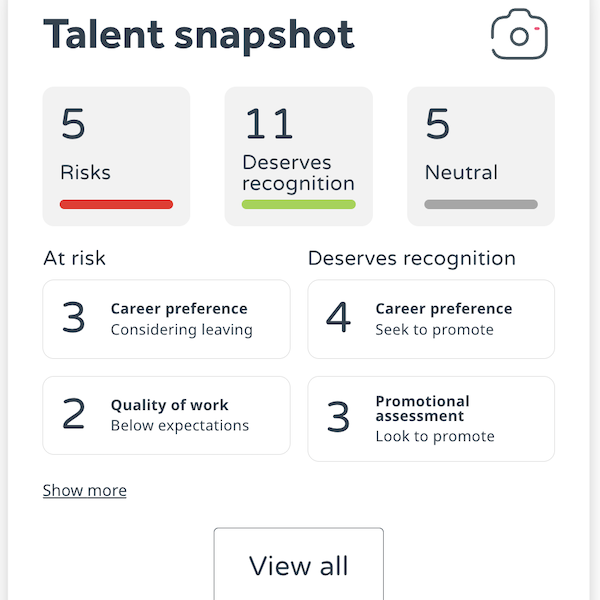Data is essential to running a successful business. Your sales, customer service, finance and marketing departments all closely monitor specific metrics to ensure your organisation is productive and profitable. So why aren’t you measuring employee data in your people strategy?
We often talk about how important it is to track metrics across our organisation without extending that logic to employee data.
Data has become an integral part of our working lives, and even more so during the pandemic. But why is it so critical for designing a people strategy that really works?
What is the current status of my people strategy?

So, how can you tell if these issues are affecting your people? Historically, the most common response has been to wait for your employees to come forward and to take a reactive approach to the issue. However, many employees are reluctant to disclose mental health problems out of fear their employer will think they can’t do their job or that they will be treated differently.
Therefore, by the time many employees come forward with concerns about their wellbeing and mental health at work, they have already reached a point of crisis. Without the ability to interact with your people face-to-face it is much easier for struggling employees to slip under the radar. This can result in presenteeism, extended mental health sick leave, and turnover.
This people strategy approach is neither beneficial for employers or employees.
What does a good people strategy look like?
Let’s define where you want to get to. Identifying the levels of engagement and wellbeing you want across your organisation is key to getting there. Decide what data you want to measure. For example, an average engagement score of 80% means that four out of five days a week your people have what they need to be motivated, productive and happy.

It’s also important to remember that what good looks like is also defined by law. All organisations still have a corporate responsibility to protect the wellbeing and health and safety of their remote employees.
Even when working from home, HSE recommends that employers utilise a stress risk assessment, looking at your people’s quality of working relationships, the understanding of one’s role, poor communications and the impact of change.
How do I gather feedback effectively?
Not long ago the annual employee survey was standard for most organisations. Annual benchmarking and rigid questions asked year after year provided limited insights. Often, by the time feedback was gathered, analysed and acted upon, employee feedback had become outdated and irrelevant.
More recently we’ve seen the evolution of pulse surveys, action plans and continuously updating dashboards. But gathering feedback most effectively in the age of Covid relies upon looking more closely at the individual employee experience.
We know that one-size-no-longer-fits-all. Teams aren’t confined to their area of the office. Employees are dispersed across the country and working in completely different conditions to many of their colleagues. Therefore it is critical to look at employee feedback on a much more individual level.
Shorten your feedback-to-impact loop when designing your people strategy. This will ensure that your plan is relevant, specific and addresses the needs of all your employees.
How to interpret your employee data
Making sure you really understand what your people are telling you is critical. It’s easy to misinterpret employee data, either subconsciously or through human error.
Often it is very difficult for your own staff to do this well, because of the many cognitive biases that will affect the result if the analysis is done by an insider.
The most obvious of these is confirmation bias – a kind of wishful thinking makes us give more weight to things that we think are true, or would like to be true.
Handing the analysis to an external provider is more likely to provide a true picture of your people’s experience. At WeThrive our intelligent solution does this automatically, extracting meaningful insights for you and your managers.
Design your 2021 people strategy for free with WeThrive
Our Employee Engagement and Wellbeing Survival Kit provides you with a full analysis of your organisation using our unique 4C corporate psychology model. Designed to help you dig deeper into the conscious and subconscious areas that impact your employee’s engagement and wellbeing, our ready-made employee engagement survey analyses the 4 key areas that influence our feelings at work.
The survival kit takes just 7 days to uncover the specific vulnerabilities among your people, and it doesn’t stop there. We’ll break down the data for you and tell you precisely what actions you should take to see quick engagement and wellbeing improvements across your organisation.
When your survey is complete you’ll receive:
- An engagement and wellbeing risk heat map with employee data
- Top 2 wellbeing recommendations for your business
- Top 2 engagement recommendations for your business
- Curated learning resources
Bonus features:
- Top areas of engagement and wellbeing
- A full results review for every area of your business
Check out a sample report from our engagement and wellbeing survival kit to see how WeThrive could help inform your people strategy.
Four simple steps to get your Engagement and Wellbeing Survival Kit
- Create your free WeThrive account by signing up here (no credit card info required)
- Send out your survey in a few clicks – sit back and relax for 7 days
- We’ll send you the analysis for your organisation (and a few extra goodies)
- Work through our recommendations to help your people thrive!
About WeThrive
Employee Engagement, Evolved
WeThrive is the agile employee engagement platform that uncovers how your people truly feel, enabling managers to create highly effective teams, increase employee retention and employee wellbeing and deliver better business results.


